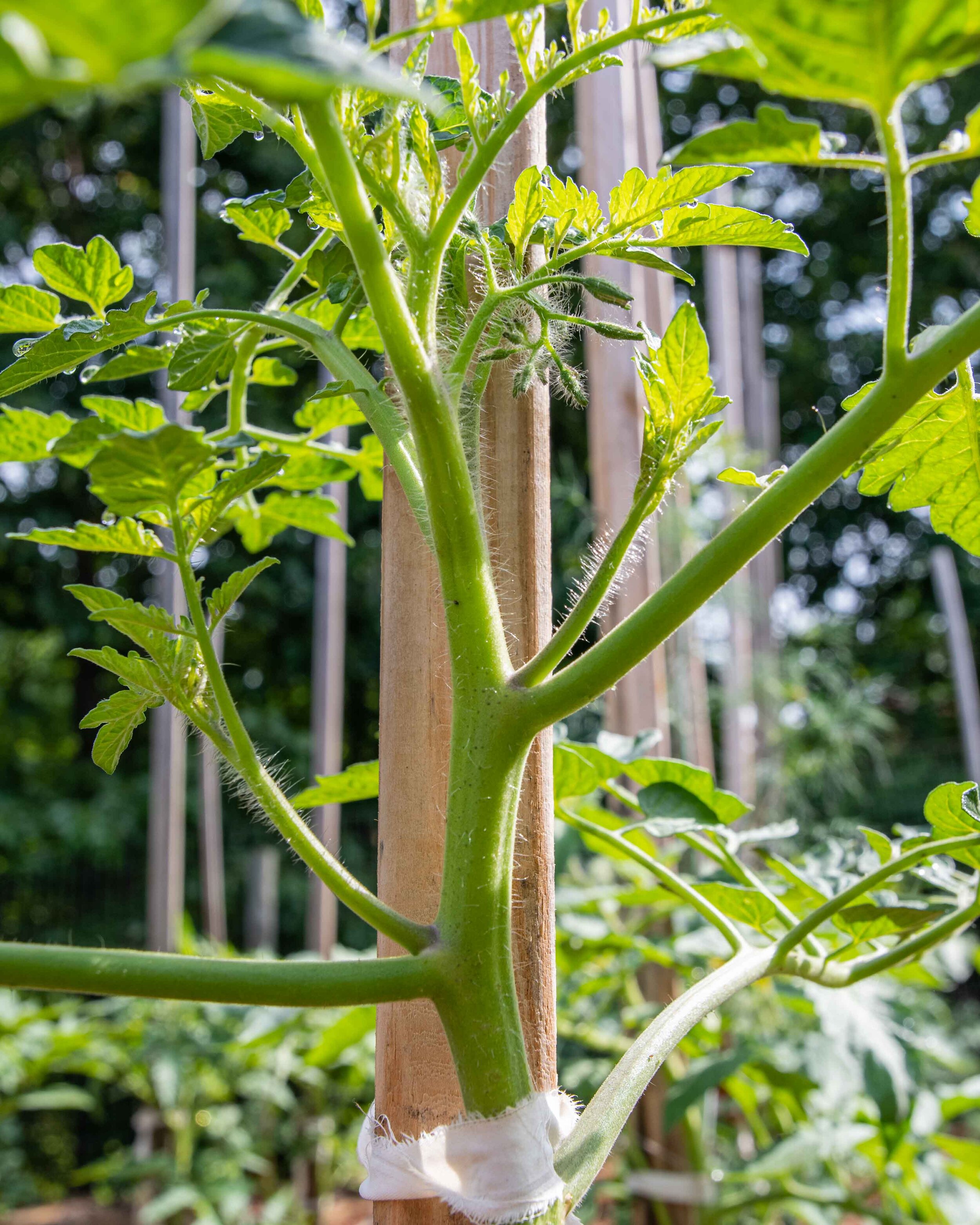by Mark Levisay
Let’s review the pruning and tying up of tomato plants which we talked about in an earlier post. This is something you should be doing now, in June and July to prepare for supporting heavy sets of fruit and to discourage disease later on. I recently took some photos in my garden to illustrate some of the important steps in properly training your tomato plants.
Remove tomato “suckers”
In Photo 1 you can see the development of “suckers”. Suckers appear regularly on most tomato plants at the nodes-the place on the stem where the leaf branches grow. Suckers can grow and produce fruit, but the plant is actually better off when you remove almost all of them, leaving only 2 to 3 main growing leaders. Too many leaders gives you a plant that is too thick to allow good air movement, which will contribute to diseases later on in the season. It also shades the fruit that does form and slows the ripening process. Just snap these suckers off when you see them. I do this every time I tie up the plants, which may be every 5-7 days at this time of year using strips of old sheets or pillowcases.
Photo 1: Suckers on tomato plant.
Choose leaders
In Photo 2 you can see what looks like a really robust sucker (to the left) with the main leader to the right. These large suckers seem to occur once the plants are 12-18” high. I allow 1-2 of these large suckers to continue to grow and become producing leaders on the plant. These new leaders will grow suckers of their own which should be removed as they appear.
Photo 2: Choose one or two suckers to augment the primary leader.
Photo 3: Leader and sucker tied to the support.
Photo 3 shows how I’ve tied up the main leader and the large sucker to train them both for vertical growth. I try to tie the leader to the supporting poles right below a node where the leaf branches out, as this helps support the stem when it’s heavy with fruit. If there are flowers present, try tying just under the flower shoot.
Provide sturdy support
Photo 4 shows an example of a tomato plant which has been pruned of its suckers and tied up to a sturdy support pole. One trick I’ve learned over the years is to put a wood or drywall screw into the supporting pole about half way up. This gives one of the ties something to catch, as the plants tend to slump down when they are heavy with fruit. If the plant slumps down too much under the weight of the fruit it can crimp the main stem and cut off the plants nutrient supply.
Photo 4: Pruned tomato tied securely to strong support.
Reduce soil splash
Photo 5 shows two rows of staked and pruned tomato plants, ready to support heavy sets of fruit in the coming months. Note that this 5’ X 20’ bed allows for 2 rows of plants which can be reached from either side of the bed without walking or standing in the bed. The plants within a row are 30” apart and the rows are about 3’ apart. Also note that all of the soil in the bed has been covered with mulch to prevent soil splash during heavy rains. Soil splash can introduce fungal spores onto the plant leaves which should be avoided. There is a soaker hose connecting all of these plants for watering, but you can’t see it as it’s almost completely covered by the mulch.
Photo 5: Tomato plants staked in bed with soaker hose under layer of mulch.
If you follow these suggestions with your tomato plants you’ll be rewarded with healthy plants and loads of ripe fruit by the end of July! Please contact me at marklevisay@gmail.com with any questions you may have.




